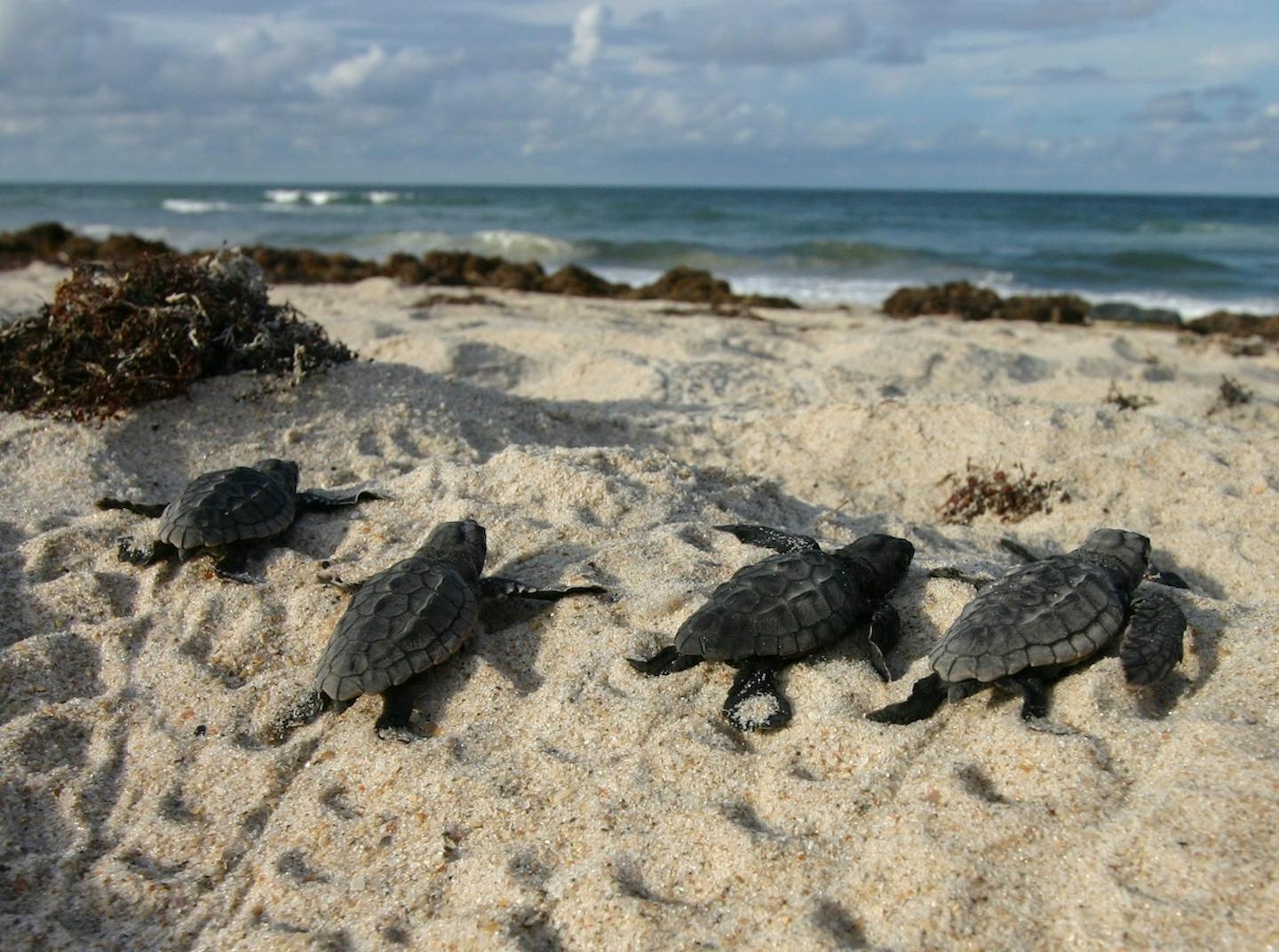Sea turtle numbers rebound in a long-term recovery
In 2018, something extraordinary happened in Phuket, Thailand. For the first time in five years, a leatherback turtle (Dermochelys coriacea) crept onto a local beach, dug a nest in the sand, and laid 118 tiny white eggs. Not long after that, two more nests appeared.
When the next nesting season came around, between November 2019 and February 2020, the amount of nests nearly tripled: local monitors recorded 11 leatherback turtle nests, which resulted in 351 hatchlings.
Kongkiat Kittiwatanawong, an endangered species specialist and director of the Phuket Marine Biological Centre, said this was the highest number of sea turtle nests in Phuket in over 20 years.
Ten thousand miles away from Phuket, the Loggerhead Marinelife Center in Juno Beach, Florida, has also observed a rise in turtle nesting. At this time in 2019, there were 1,968 sea turtle nests dotted along a 15-kilometer (9.5-mile) stretch of shore. Now, a year later, there are a lot more. As of May 20, the team counted 196 leatherback nests, 2,028 loggerhead (Caretta caretta) nests and seven green turtle (Chelonia mydas) nests, bringing the running tally to 2,231.

A freshly laid loggerhead nest found at sunrise during sea turtle nesting surveys in Palm Beach County, Florida. Sarah Hirsch
“We are observing the season with cautious optimism,” Justin Perrault, director of research at the Loggerhead Marinelife Center, told Mongabay.
David Godfrey, executive director of the Sea Turtle Conservancy, a Florida-based nonprofit that works to protect turtles and tortoises, also reported increased nesting of sea turtles in Florida, as well as in other U.S. states.
Thailand and the U.S. aren’t the only places to see an uptick in turtle nesting. In Odisha, India, olive ridley sea turtles (Lepidochelys olivacea) have nested on the shoreline for the first time in seven years. And in the coastal village of Candiis in the Philippines, community members are working together to protect beaches where critically endangered hawksbill turtles (Eretmochelys imbricata) tend to nest, which has led to more nests and eggs.
This upward trend in turtle nesting, in many places around the world, begs the question: what is responsible for this upsurge?
Read more on Mongabay >



